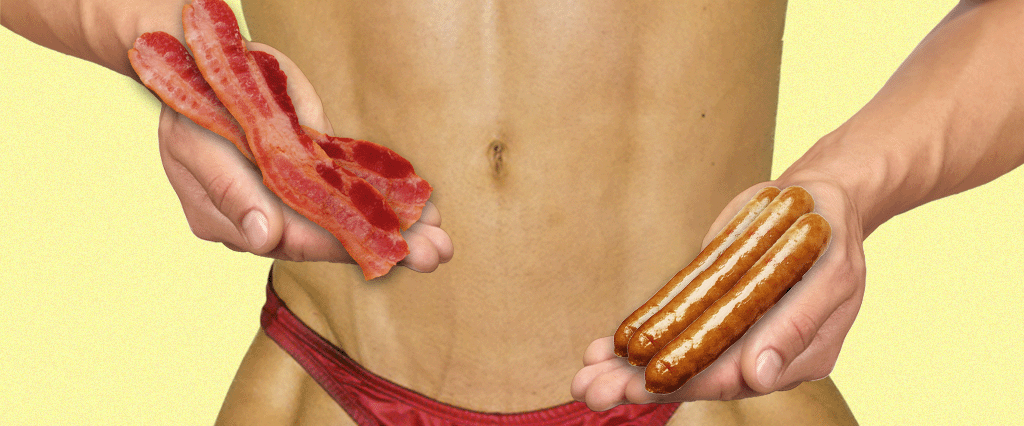When it comes to breakfast, there are only two meats worth mentioning: sausage and bacon.
Determining which is ostensibly more popular is pretty easy. After all, I don’t recall that I’ve ever seen sausage bits served up at a salad bar, nor do I suspect that the executives at Burger King have ever floated the idea of serving up a sundae with sausage logs stuffed deep into soft-serve ice cream. Bacon is the clear winner of the popularity contest.
Health, of course, is a different matter, and anecdotally, I’d have to believe bacon is the less healthy of the two. Why, you ask? What hard science is backing my assertion? None whatsoever… at least not yet. This snap judgment is based solely on the fact that my mother banned bacon from our family breakfast table right around the time she was also banning pro wrestling from our television sets, theoretically because both were unhealthy for us in radically different ways.
Now that I’ve set up both my mother and myself to look foolish, it’s time to take a deep dive into two famously fat-heavy breakfast meats. Was mom correct to omit bacon from our Sunday morning breakfast plates, or was the serving of sausage that she replaced it with every bit as baneful?
Which one is healthier — the bacon or the sausage?
To tackle this in the fairest fashion possible, we should execute this comparison in as close to an apples-to-apples manner as we can muster. How do we juxtapose bacon with sausage using an approach based on figurative fruits? By using the generic bacon and common sausage that are sourced, manufactured and sold by established but generally unimpressive brands. At least that way, we can minimally presume that they’re escorting the same ordinary little piggies to market before transforming them into standardized breakfast bits. This enables us to set the stage for the sort of culinary contest that Bender Bending Rodriguez would undoubtedly describe as being “Fun on a bun.”
That’s why we’re going to end up comparing Banquet Brown ‘N Serve Sausage Links with Hormel Black Label Bacon. We could sloppily compare these on a serving-per-serving basis, but then we’d be stuck with data that doesn’t make any rational sense in a real-world setting. So instead, we’ll do a gram-for-gram breakdown of these two breakfast favorites:

When we analyze the numbers from our apples-to-apples, gram-for-gram breakdown, we see that the bacon is certainly more nutrient dense. Next, we’ll shift lenses to compare them on a slice-to-link basis (or, you know, how they’re likely to be parceled up and doled out on a breakfast plate):

See? This is why it’s important to evaluate all of the contexts. If you plan to evenly distribute links and strips, you’ll be receiving more overall calories from your sausage selection with slightly less cholesterol and sodium, while the protein difference is negligible.
How does this influence whether one is worse for my waistline than the other one?
Because now we know that the expansion rate of your waistline will be determined by the simple matter of how you consume the meat products in question. If you consume 30 grams of each food product, you’ll eat about 90 calories worth of sausage and 160 calories worth of bacon. The bacon is clearly contributing more to your waistline under these conditions. However, if the choice is between eating four sausage links or four bacon strips, you’ll be eating 228 calories of sausage and 160 calories of bacon. As you can see, whether one is objectively better or worse for your waistline becomes inseparably linked to how you prefer to administer food.
It’s a tie?
Sounds like it, right? Well, ties are for soccer players and shoelaces. My mother was a two-pieces-of-meat-per-plate server of breakfast meats, which makes her decision to substitute sausage for bacon incorrect from a waistline perspective. This serves as evidence that even the best mother on earth can get something wrong once in a while, and that the worst son in the world will cling desperately to a family food grudge straight to the bitter end.
What can I say? I’m petty.

